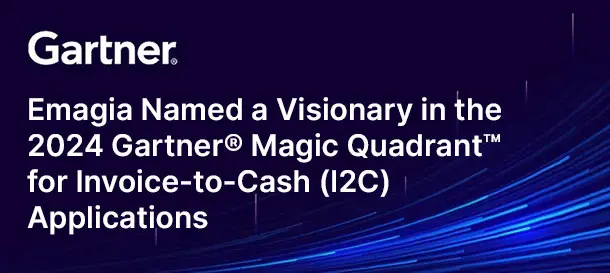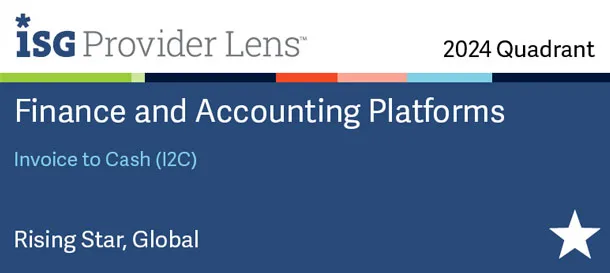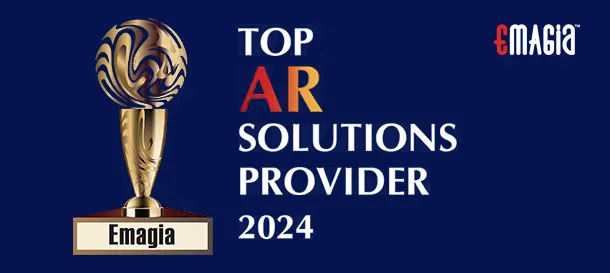Introduction to How to Reduce DSO and Accelerate Cash Flow
In today’s competitive business environment, improving cash flow is a critical priority for finance leaders. One of the most effective levers to achieve this is reducing DSO — Days Sales Outstanding. A lower DSO not only improves liquidity but also strengthens working capital, reduces borrowing needs, and supports long-term business growth.
In this comprehensive guide, we will explore proven strategies for DSO reduction and cash flow acceleration. We will cover collections management, cash application, dispute resolution, and analytics-driven techniques to improve your order-to-cash performance. By leveraging automation and technology, organizations can transform their receivables process for greater efficiency and financial health.
Why Reducing DSO Matters
DSO is a key performance metric that reflects how long it takes a business to collect payment after a sale. High DSO values indicate slower collections, tying up cash that could otherwise be used for operations, investments, or debt reduction. Conversely, lowering DSO accelerates cash inflows and strengthens financial resilience.
The Link Between DSO and Cash Flow
DSO directly impacts working capital and cash flow. A reduction in DSO means faster payment cycles, allowing companies to reinvest cash sooner. This creates a positive cycle where businesses can invest in growth initiatives without relying heavily on external financing.
Focus Areas for DSO Reduction
Successful DSO reduction strategies focus on four core areas:
- Collections Management: Ensuring timely follow-ups and payment reminders.
- Cash Application: Speeding up invoice matching and payment reconciliation.
- Dispute Resolution: Minimizing delays caused by invoice disputes.
- Analytics: Using data to monitor performance and guide decision-making.
Understanding Days Sales Outstanding (DSO)
DSO is an essential indicator of a company’s credit and collections efficiency. It provides insight into the effectiveness of receivables management and overall operational health.
How to Calculate Days Sales Outstanding
The formula to calculate DSO is:
DSO = (Accounts Receivable / Total Credit Sales) x Number of Days
This calculation reflects the average number of days it takes to collect payment after a sale. Regular monitoring of DSO helps businesses identify trends and address delays proactively.
What is a Good DSO Benchmark?
DSO benchmarks vary by industry. For example, a manufacturing company may have a higher DSO compared to a subscription-based business due to different payment terms and invoicing cycles. Understanding your industry benchmark is crucial to setting realistic targets for improvement.
The Impact of DSO on Working Capital
Working capital is the lifeblood of business operations. High DSO can strain working capital, forcing companies to rely on credit or loans to fund operations. Lowering DSO frees up cash and strengthens the company’s financial position.
Common Causes of High DSO
Before implementing DSO reduction strategies, it’s important to understand why DSO might be high.
Poor Invoice Accuracy
Errors in invoices, such as incorrect amounts or missing details, cause payment delays. Automation in invoice generation reduces human errors and speeds up collections.
Lack of Proactive Collections
Waiting until payment is overdue to follow up increases DSO. Proactive collections management involves early communication and reminders before the due date.
Disputes and Billing Errors
Invoice disputes cause payment delays. Efficient dispute resolution workflows are critical to minimizing DSO.
Credit Policy Gaps
Weak credit policies or inconsistent enforcement can lead to slow payments. Optimizing credit terms and aligning them with customer risk profiles can significantly improve DSO.
Poor Visibility into Receivables
Without real-time visibility into accounts receivable, finance teams cannot effectively manage collections. Dashboards and analytics tools play a vital role in reducing DSO.
Setting the Stage for Effective DSO Reduction Strategies
Understanding the causes of high DSO is the first step toward improvement. The next step is to develop a comprehensive strategy that includes process optimization, automation, and data-driven decision-making.
Aligning Business Goals with DSO Reduction
DSO reduction should be a strategic objective, tied to improving cash flow, reducing borrowing costs, and strengthening financial stability. This alignment ensures commitment across finance, sales, and customer service teams.
DSO Reduction as Part of Working Capital Optimization
Reducing DSO contributes directly to improving working capital. Efficient collections, cash application, and dispute resolution are key pillars of working capital optimization strategies.
Preview of DSO Reduction Strategies Covered in this Guide
- Automated invoice processing for faster collections
- Proactive collections management
- Incentives for early payment
- Credit policy optimization
- Customer segmentation for targeted collections
- Real-time cash application and payment matching
- Dispute resolution automation
- Analytics-driven DSO improvement
In the following sections, we will explore each of these strategies in depth, supported by real-world examples, case studies, and actionable best practices for achieving sustainable DSO reduction and accelerating cash flow.
Core Strategies to Reduce DSO
Reducing DSO requires a comprehensive approach. Businesses must align people, processes, and technology to accelerate collections and improve cash flow. The following strategies offer actionable ways to achieve measurable improvements.
DSO Reduction Strategies Overview
DSO reduction is not a one-time activity but a continuous process of optimization. The key is to identify bottlenecks in collections and cash application workflows, automate repetitive tasks, and leverage analytics for data-driven decision-making.
Automated Invoice Processing for Faster Payment Cycles
Manual invoice generation and delivery create delays that directly impact DSO. Automated invoice processing eliminates errors and accelerates invoice distribution, ensuring customers receive accurate bills promptly.
Automation tools also enable features like e-invoicing, real-time invoice tracking, and integration with ERP systems. These improvements result in quicker payments and fewer disputes, lowering your DSO effectively.
Benefits of Automated Invoice Processing
- Reduced human errors and discrepancies
- Faster invoice creation and delivery
- Improved compliance and audit readiness
- Better visibility into receivables
Proactive Collections Management
Waiting for invoices to become overdue before initiating collections increases DSO. Proactive collections management focuses on engaging customers early and maintaining clear communication throughout the billing cycle.
This approach includes automated payment reminders, segmentation of customers based on payment behavior, and prioritizing follow-ups for high-risk accounts.
Techniques for Proactive Collections
- Automated reminders before due dates
- Personalized follow-up communications
- Customer segmentation for tailored approaches
- Tracking payment behavior trends with analytics
Incentives for Early Payment
Offering incentives for early payment motivates customers to pay before the due date. Early payment discounts or favorable terms encourage prompt settlement of invoices, improving cash flow and lowering DSO.
Types of Early Payment Incentives
- Percentage-based discounts for early settlement
- Flexible payment schedules
- Priority service benefits
- Customized incentive programs based on customer segmentation
Credit Policy Optimization
Effective credit policies are a cornerstone of DSO reduction. Aligning credit terms with customer risk profiles ensures that credit is extended responsibly, reducing overdue payments and disputes.
Best Practices for Credit Policy Optimization
- Regularly review credit limits and terms
- Use automated credit assessments
- Apply data-driven risk scoring
- Integrate credit policies into ERP and AR automation systems
Customer Segmentation for Targeted Collections
Not all customers have the same payment behavior. Segmenting customers based on payment history, credit risk, and transaction volume allows businesses to focus resources strategically and improve collection efficiency.
Benefits of Customer Segmentation
- Tailored collection strategies
- Better resource allocation
- Improved cash flow predictability
- Faster dispute resolution
Proven DSO Reduction Frameworks
Many successful businesses adopt frameworks that combine automation, analytics, and proactive collections to lower DSO sustainably. Frameworks like AR automation, credit risk monitoring, and predictive collections are powerful approaches.
AR Automation to Lower DSO
Accounts Receivable automation streamlines the billing and collections process. From automated invoice generation to real-time payment tracking, AR automation reduces manual effort, improves accuracy, and accelerates cash flow.
Predictive Collections with AI
AI-driven predictive analytics identify accounts at risk of delayed payment. This insight allows finance teams to prioritize follow-ups, reduce disputes, and focus collections efforts where they will have the greatest impact on DSO.
Incentivized Payment Programs
Integrating customer incentives with AR automation can create a virtuous cycle — customers pay sooner, reducing DSO, and companies improve cash flow and working capital.
Measuring Success in DSO Reduction
Implementing strategies is only effective if progress is tracked. Measuring DSO regularly and comparing against industry benchmarks is essential to monitor the success of improvement initiatives.
Key Metrics to Track
- Average DSO over time
- Percentage of overdue invoices
- Dispute resolution time
- Collections success rate
- Payment cycle time
Tools for Measuring DSO Improvement
Modern AR automation platforms offer dashboards that track key metrics in real-time. These analytics tools help finance teams respond quickly to changes and continuously optimize DSO performance.
Leveraging Automation & Technology to Reduce DSO
Automation and technology are transforming accounts receivable and collections management. By leveraging advanced tools such as AI, machine learning, and AR automation software, businesses can drastically reduce DSO, improve cash flow, and enhance operational efficiency.
Accounts Receivable (AR) Automation
AR automation streamlines the entire order-to-cash cycle — from invoicing to payment posting. It eliminates manual tasks, reduces errors, and speeds up the collections process. This directly contributes to lowering DSO by improving payment timelines.
Key Features of AR Automation
- Automated invoice generation and delivery
- Electronic payment processing
- Real-time cash application
- Automated dispute resolution workflows
- Customizable AR workflows to match business needs
AI-driven DSO Reduction Techniques
Artificial intelligence plays a significant role in modern AR automation. AI-powered tools can predict payment delays, prioritize collection efforts, and automate follow-ups based on customer behavior patterns.
Applications of AI in DSO Reduction
- Predictive analytics for overdue accounts
- Personalized payment reminders
- Automated risk scoring for customers
- Dynamic credit term adjustments
Self-Service Payment Portals
Self-service portals empower customers to view invoices, make payments, and resolve disputes on their own, reducing friction and accelerating payment cycles. This not only improves customer experience but also reduces manual intervention in collections.
Benefits of Self-Service Payment Portals
- 24/7 access to invoices and payment options
- Instant payment processing
- Reduced call center workload
- Faster resolution of payment issues
Automated Payment Reminders and Follow-Ups
Automation ensures timely reminders and follow-ups without relying on manual intervention. This proactive approach reduces late payments and supports a lower DSO.
Best Practices for Automated Reminders
- Send reminders before due dates
- Personalize communication based on customer history
- Automate escalation for overdue accounts
- Track and report reminder effectiveness
Cash Application Automation and DSO Reduction
Cash application automation ensures that incoming payments are matched to invoices quickly and accurately. This eliminates delays caused by manual reconciliation, reducing DSO and improving visibility into cash flow.
Real-Time Cash Application
Real-time cash application improves payment posting speed, reduces unapplied cash, and enhances the accuracy of receivables data. This enables finance teams to manage collections more efficiently.
Automated Payment Matching
Intelligent payment matching uses AI and machine learning to automatically reconcile payments with invoices, even in complex scenarios involving partial payments or deductions.
Advantages of Automated Payment Matching
- Improved accuracy in reconciliation
- Faster cash posting
- Reduced manual workload
- Better visibility into receivables
Dispute Resolution Automation for Cash Flow Optimization
Invoice disputes are a major cause of delayed payments and higher DSO. Automation tools streamline dispute resolution workflows to minimize delays and improve cash flow predictability.
Automated Dispute Management
Automated dispute management tools categorize and track disputes, route them to the appropriate team, and ensure timely resolution. This reduces the average dispute resolution time and accelerates cash inflow.
Integration with Analytics Dashboards
Dashboards provide a real-time view of disputes, collections status, and DSO trends. By integrating dispute resolution with analytics, businesses can identify patterns, prevent recurring issues, and optimize AR workflows.
Real-Time Analytics for DSO Improvement
Analytics are critical for monitoring DSO and driving continuous improvement. Real-time dashboards enable finance teams to track collections performance, cash application accuracy, and dispute resolution efficiency.
Key Metrics for Monitoring DSO
- Average DSO trends
- Percentage of overdue invoices
- Dispute resolution time
- Payment cycle length
- Collections efficiency ratio
Predictive Analytics for Cash Flow Forecasting
Machine learning algorithms can forecast cash flow based on payment behavior and historical data. Predictive analytics enable proactive actions to reduce DSO and ensure steady liquidity.
Best Practices for Leveraging Technology to Reduce DSO
- Implement AR automation platforms integrated with ERP systems
- Use AI for predictive collections and risk scoring
- Deploy self-service payment portals
- Automate payment reminders and dispute resolution workflows
- Monitor performance continuously with analytics dashboards
Dispute Resolution Automation for Faster Cash Flow
Invoice disputes are one of the leading causes of delays in accounts receivable and high DSO. Resolving disputes manually can be time-consuming and resource-intensive. Automation of dispute resolution streamlines the process, minimizes delays, and accelerates cash flow.
Key Challenges in Dispute Management
- Delayed dispute resolution impacting cash flow
- Lack of visibility into dispute status
- Manual and inconsistent workflows
- Poor communication between teams
Automated Dispute Resolution Workflows
Automation platforms can streamline dispute resolution by categorizing disputes, routing them to the correct teams, tracking status, and ensuring timely resolution. This results in quicker settlements and reduced DSO.
Benefits of Automated Dispute Resolution
- Faster dispute resolution
- Reduced manual intervention
- Improved customer satisfaction
- Clearer audit trails
Analytics and Reporting to Drive DSO Reduction
Real-time analytics and reporting empower finance teams to monitor DSO performance, identify bottlenecks, and implement corrective measures quickly.
DSO Dashboards and KPI Tracking
Modern AR automation platforms provide dashboards that track KPIs such as average DSO, percentage of overdue invoices, dispute resolution time, and collection success rates. These insights allow teams to act proactively.
Essential KPIs for DSO Monitoring
- Average DSO trends over time
- Percentage of invoices paid late
- Dispute resolution timeframes
- Payment cycle length
- Collections efficiency metrics
Predictive Analytics for Cash Flow Management
By analyzing historical payment behavior and trends, predictive analytics tools forecast future cash inflows. These forecasts help finance teams plan working capital needs, manage risk, and prioritize collections.
Best Practices for Accounts Receivable and DSO Management
- Implement AR automation integrated with ERP systems
- Regularly review and adjust credit policies
- Use predictive analytics for proactive collections
- Automate payment reminders and dispute workflows
- Segment customers for tailored collections strategies
- Track KPIs using real-time dashboards
- Encourage early payments with incentives
- Continuously train teams on AR best practices
How Emagia Helps You Reduce DSO and Accelerate Cash Flow
Emagia offers a powerful AR automation solution designed to help organizations reduce DSO and accelerate cash flow through intelligent automation, real-time analytics, and efficient workflows.
Key Benefits of Emagia’s Solution
- Automated Collections: Proactive and personalized reminders to customers to ensure timely payments.
- Smart Cash Application: AI-driven matching of payments to invoices, reducing unapplied cash and improving visibility.
- Dispute Resolution Automation: Streamlined workflows for faster resolution of invoice disputes.
- Advanced Analytics: Real-time dashboards to monitor DSO trends, collections performance, and working capital.
- ERP Integration: Seamless integration with existing ERP systems for end-to-end order-to-cash automation.
- Predictive Insights: AI-powered analytics to forecast cash flow and prioritize collections based on risk.
Emagia’s Approach to Driving Results
Emagia uses a blend of automation, AI, and analytics to address the root causes of high DSO. By removing inefficiencies from the collections process, ensuring accurate invoice matching, and resolving disputes faster, Emagia helps businesses achieve sustainable DSO reduction.
Customer Success Stories
Numerous organizations across industries have partnered with Emagia to transform their accounts receivable operations. Companies report faster collections, improved cash flow, reduced disputes, and better customer relationships.
Why Choose Emagia
- Proven expertise in accounts receivable automation
- Customizable solutions tailored to unique business needs
- Scalable technology that grows with your business
- Commitment to driving measurable results
Frequently Asked Questions about Reducing DSO and Accelerating Cash Flow
What is DSO and why is it important?
DSO stands for Days Sales Outstanding. It measures the average number of days it takes for a business to collect payment after a sale. Lower DSO improves cash flow, working capital, and financial stability.
How can automation help reduce DSO?
Automation streamlines invoicing, collections, dispute resolution, and payment matching. This reduces manual delays, improves accuracy, and accelerates payment cycles, directly lowering DSO.
What role does AI play in DSO reduction?
AI enables predictive analytics to identify high-risk accounts, personalize payment reminders, and optimize credit terms. This helps prioritize collections and reduce overdue payments.
What are the best practices for reducing DSO?
Key practices include implementing AR automation, automating invoice processing, offering early payment incentives, segmenting customers for targeted collections, and using real-time analytics dashboards.
How does dispute resolution impact DSO?
Invoice disputes delay payment, increasing DSO. Automated dispute resolution workflows accelerate issue handling, improving payment timelines and reducing outstanding receivables.
How can predictive analytics improve cash flow?
Predictive analytics uses historical payment data to forecast future cash inflows, allowing businesses to plan working capital needs and prioritize collections strategically.
What are common KPIs to track for DSO improvement?
Important KPIs include average DSO, percentage of overdue invoices, dispute resolution time, payment cycle length, and collections efficiency rate.
How does Emagia help in reducing DSO?
Emagia offers an integrated AR automation solution with intelligent cash application, automated collections, dispute resolution, and real-time analytics, helping organizations reduce DSO and accelerate cash flow effectively.
Conclusion
Reducing DSO and accelerating cash flow are critical goals for any business seeking financial stability and growth. By leveraging automation, AI, predictive analytics, and proactive collections strategies, organizations can significantly improve cash flow performance. Integrating these capabilities into a structured framework ensures sustainable improvements and better working capital management.
Businesses that adopt innovative technologies and best practices for AR management gain a competitive advantage through faster cash conversion cycles and reduced credit risk. Embracing automation and analytics is no longer optional — it is a necessity for modern finance teams.
Call to Action
If your organization is struggling with high DSO and delayed cash flow, now is the time to take action. Partner with Emagia to transform your accounts receivable process, automate workflows, and unlock faster payments. Contact Emagia today to explore a tailored solution that drives measurable results for your business.



